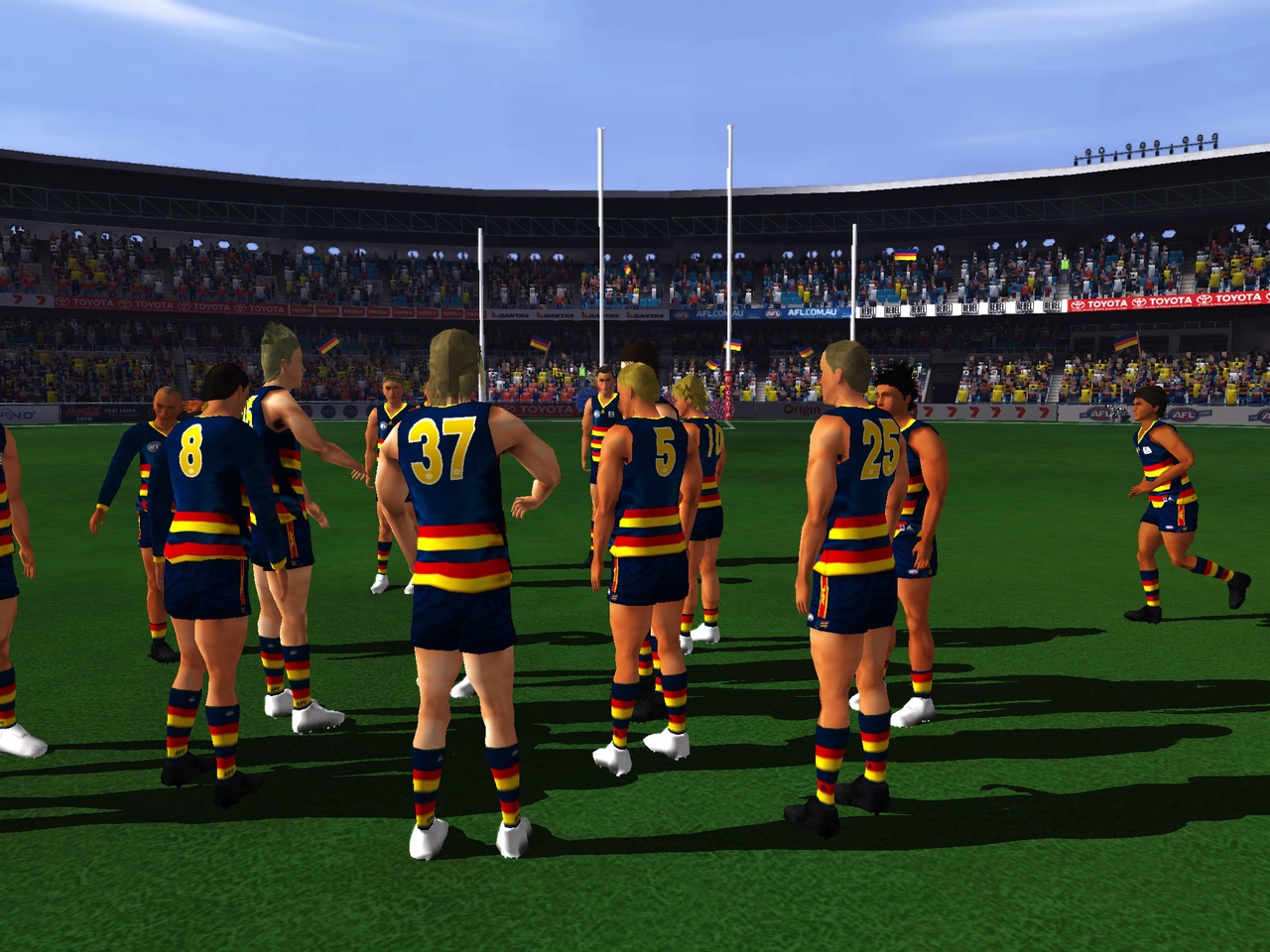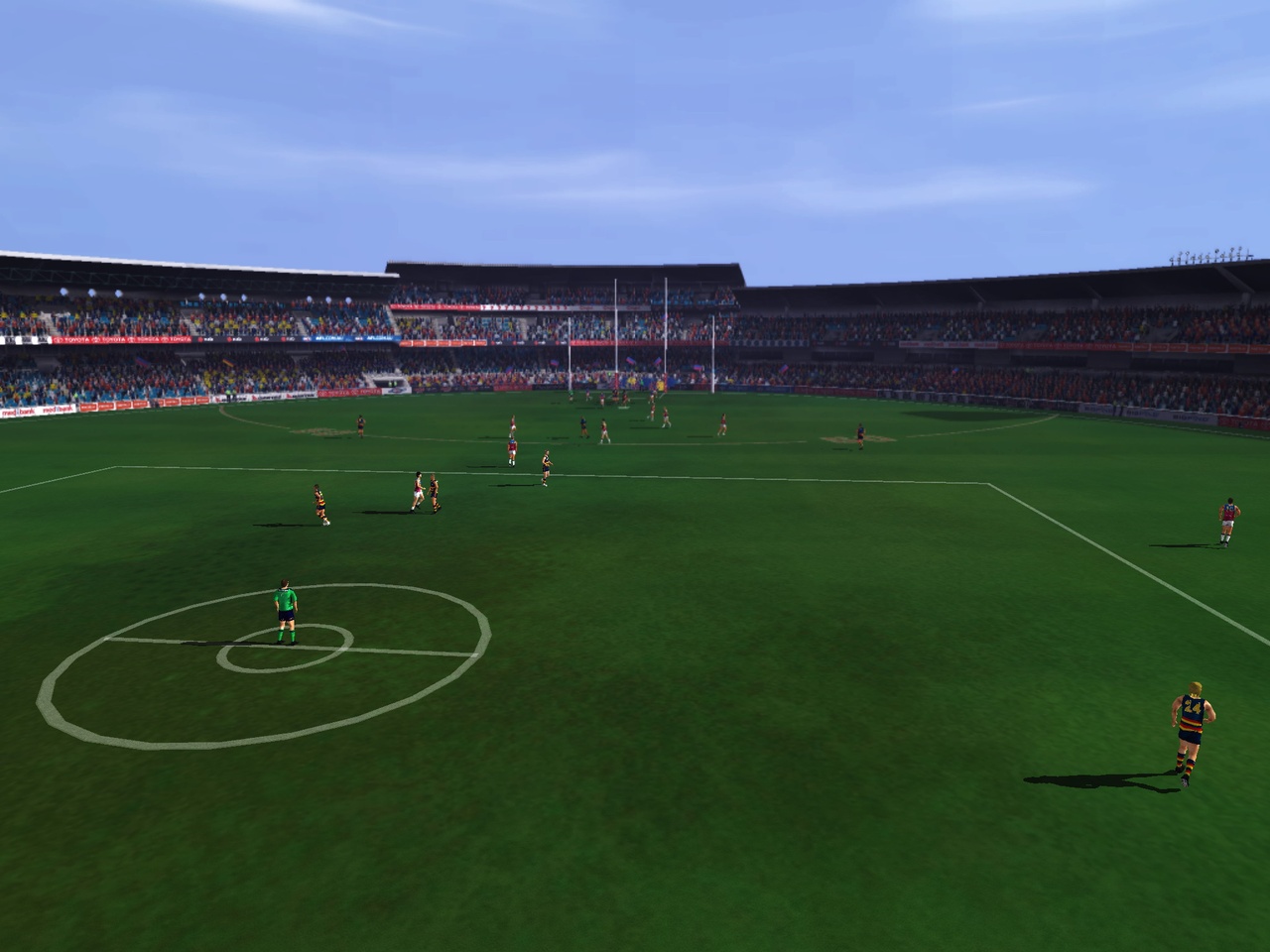Melbourne-based development house IR Gurus has been at the helm of the AFL Premiership series for quite some time now, pumping out a new game every year in much the same way that EA Sports cycles through a Madden or Tiger Woods title yearly. IR Gurus' latest--AFL Premiership 2007--comes less than 12 months after its 2006 effort. The quick turnaround is good, but the bad news for Aussie sports lovers is that AFL Premiership 2007 is, for the most part, the 2006 game with only minor additions and with most of the faults of its predecessors.
As with previous incarnations, AFL Premiership 2007 features all 16 teams, as well as the various pre- and full-season fixtures of the sport of Australian Rules Football. The series' trademark attention to statistical detail is well and truly present in AFL Premiership 2007. More than 900 players, a whole swathe of classic jerseys for each team, and an impressive list of real-life AFL awards, as well as achievements, (including Brownlow and Coleman medals) are included. Diehard AFL fanatics will no doubt appreciate the inclusion of up-to-the-minute team rosters, which includes all of 2007's new draftees and rookies.

Unfortunately, the updated roster is the most significant thing going for AFL Premiership 2007 over the 2006 offering. IR Gurus has added a new weekly training mode, as well as some control and graphical tweaks to 2007, but the game looks and plays almost identically to last year's game. If you've played 2006, then be prepared for the same clunky controls and blocky graphics in AFL 2007.
Let's begin with gameplay additions. AFL Premiership 2007 features new evasive maneuvers, such as the ability to spin out of a tackle, giving attacking players a chance to bust through tight opposition defense. While it's still far too easy to overpower a kick again, the game has completely removed the kick meter at the easy difficulty level for novice players. General gameplay also seems faster, with players moving quicker when running and finding space.
Most of the enhancements are small tweaks, and most of the same frustrations present in the last AFL Premiership game are still to be found here. Players still move sluggishly, particularly when it comes to maneuvering them around the field. Changing the direction in which a player is running, and player reactions to input commands are slower than they should be. Players once again take far too long to recover from bumps or even missed tackles, and it's still frustratingly difficult to tell when your player actually has possession of the ball in contested situations. That said, the overall level of player responsiveness in AFL Premiership 2007 is a step up from the 2006 version, although it's still far from being a smooth experience.
AFL Premiership's goal-kicking mechanic of a sliding meter that appears when players are within striking distance is as unwieldy to use as it was last year. The meter makes it difficult to pop a goal while on the run because players have to wait until the indicator is in the right position before unleashing a kick, regardless of their distance from goal. This extra waiting time usually results in your player getting tackled or stripped of the ball, particularly at higher difficulty levels. The in-game artificial intelligence is also still wonky. For example, umpiring decisions are wholly inconsistent (particularly with the hold-the-ball rule), and the game seems to feature a bug where players are never penalized for overstepping the mark.
AFL Premiership 2007's saving grace lies in its comprehensive career mode, which is where the biggest addition to this year's offering can be found. Career mode lets gamers pick any of the 16 clubs and play through multiple seasons. It also includes the ability to upgrade player skills during the course of a year, as well trade and draft players at the end of each season. 2007's career mode now includes a new training option, which gives gamers control over what type of training their team undergoes every week, with the aim of finely honing and developing their squad's skills and attributes. You can choose which players should train (from the full squad right down to individual players), the intensity of the training (light, medium, or heavy), and the type of training to perform. Gamers can either choose a balanced training session or specialize in skills, fitness, body, reflexes, or mind. Each different type of training results in different player attributes rising, and in some cases, falling (for example, fitness will increase stamina but will reduce agility).
The ability to finely set training regimes is a good concept, but the actual improvements to your player and to your team are quite minute. After each session, it takes weeks and sometimes an entire season before gamers actually notice significant gameplay changes. For example, training at medium intensity only garners roughly a .3 percentage boost to a player and a team's stats, meaning it could take weeks of in-game time to shift skill levels up even one point. The new training system seems at odds with AFL Premiership 2007's system of development points, a holdover from the 2006 version, which sees gamers earn points for their team after each game played. These points can be used to increase player skill attributes and is an infinitely quicker method of improving players than the grind of weekly training.
Outside of career, AFL Premiership 2007 offers the usual single-match and single-season modes. Mission mode, which first made an appearance in last year's game, is back again. In it, each of the 16 teams have a special "mission" from their history that gamers can relive. Some of these missions go back to the 1950s, which becomes somewhat farcical because AFL Premiership 2007 uses a team's 2007 roster as the lineup regardless of what era the mission game is supposed to have been played. For example, a Geelong versus Essendon match in the 1953 VFL Grand Final features Matthew Lloyd for the Bombers.
AFL Premiership 2007 runs on the same engine IR Gurus developed for the AFL Premiership 2005, and it's certainly looking dated. The player models in 2007 are as ill-defined and blocky as ever; they look nothing at all like the real-life players they're supposed to emulate. IR Gurus has added new effects into this year's game, such as better depth of field and light bloom, although all the latter seems to do is make the in-game goal posts shine like they were made of polished ivory. In a gaming environment where next-generation graphics are starting to hold sway, AFL Premiership 2007 is not at all pretty to look at, even for a game on the ageing PlayStation 2.

Sound doesn't fare much better. Dennis Cometti, Gerard Healy, and Danny Frawley take up commentating duties, and while there are some nice quotes to be had, they're recycled far too often. The commentary also sometimes goes in direct contrast to what's happening on the field, such as when commentators sum up a game as being a close match when it's actually been a walkover.
AFL Premiership 2007 is at best only a marginal improvement over the 2006 game. New additions prove to be mainly superficial, making it difficult to recommend to those who have played or own the 2006 version (and even the 2005 game to some extent). If you're an AFL fan who is absolutely dying to get it on in the virtual world but you don't have last year's AFL Premiership game, then perhaps you can justify giving 2007 a look. After all, it's the only AFL game in town.